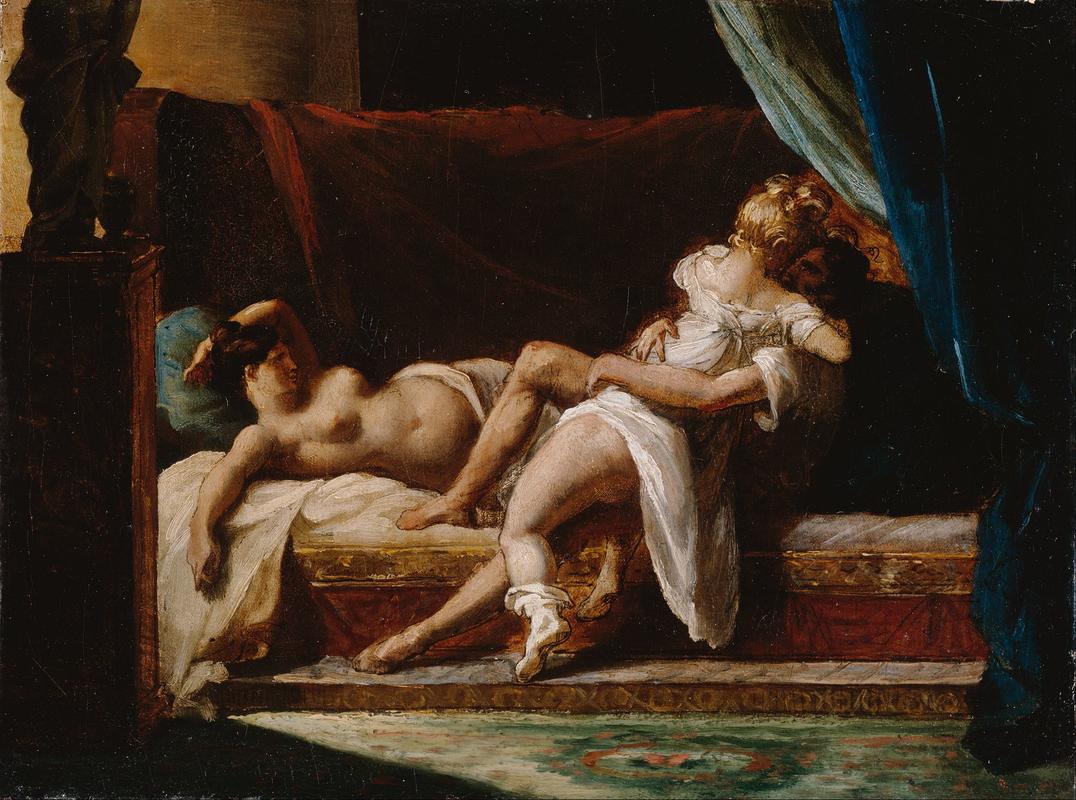More about Three Lovers

Contributor
Even as a pioneer of French Romanticism, Théodore Géricault took the art of harnessing the energy of human sexuality to a whole new level with this one.
Although Three Lovers may be his only known erotic painting, the man certainly could paint a perfectly risqué, moment.
Géricault is best known for paintings of his true passion, horses, and some images of war, but what all his paintings have in common is a focus on the present tense. He flirted with man’s self glorification in all his paintings, but it’s definitely apparent in this one. From paintings of courageous horsemen, warriors in battle and even just manly men, Géricault was always focused on figures, though they did predominantly center around men. And then there’s Three Lovers where there is a twist to that flirtation: the glory, and power, within this narrative goes to the women in this story, giving them full reign of the scene.
With such an intimate subject, it’s not surprising that Géricault intended this work for a close, private viewing. Maybe not quite as close as their lovely nude companion is to their tryst, but pretty close. And with the intimacy of this scene, Géricault shows us that all the world may actually be a stage. Our nude friend lies back in satisfied contemplation and takes the position of rapt audience, while her slightly more clothed companion mounts their third ami in the literal climax of our play. As our lady in white actively seeks her amorous game, our lady in lovemaking repose is a focal figure as she gazes on the theatrics of the intertwined couple. While some may argue that Géricault uses the physical body as an outward symbol of the degraded human soul, in these three figures, there is nothing degraded about their languid loving.
The incredible believability of the erotic situation stems from Géricault’s style of painting, his refusal to prepare detailed sketches of his subjects in advance. Rather, he painted from live models directly onto the canvas to preserve the in-the-moment nature of his subject, especially when it concerned that languid, post-coital sprawl. Each figure was painted, in full, before moving on to the next figure so they all became their own miniature composition. The independence lent to each figure through this method gave them an unparalleled physicality, which somewhat explains the reality of that passionate embrace.
Géricault used the unique combination of detailed realism and raw emotion to bring about the realities of the human condition with this rambunctious scene. The man in the painting is quite literally overshadowed by his lusty companion, so our ladies are the stars of the show.
Sources
- “Three Lovers.” Getty. The J. Paul Getty Museum, 2017. Web. January 10, 2018. http://www.getty.edu/art/collection/objects/902/theodore-gericault-thre…
- “Jean-Louis-Andre-Theodore Gericault.” The National Gallery. The National Gallery, 2018. Web. January 11, 2018. https://www.nationalgallery.org.uk/artists/jean-louis-andre-theodore-ge…
- “Theodore Gericault.” Encyclopedia Britannica. The Encyclopedia Britannica, 2018. Web. January 13, 2018. https://www.britannica.com/biography/Theodore-Gericault
- “Theodore Gericault.” The Art Story. The Art Story: Modern Art Insight, 2018. Web. January 15, 2018. http://www.theartstory.org/artist-gericault-theodore.htm
- “Theodore Gericault.” Artble. Artble, 2018. Web. January 16, 2018. https://www.artble.com/artists/theodore_gericault











